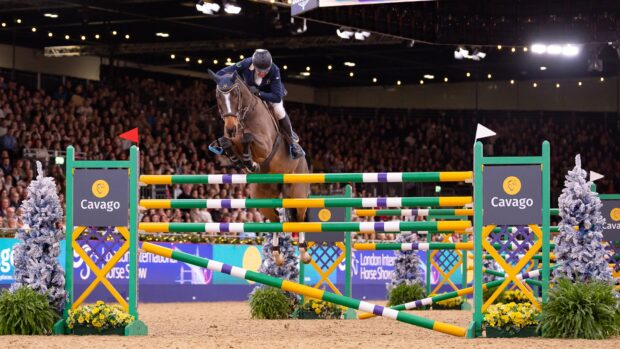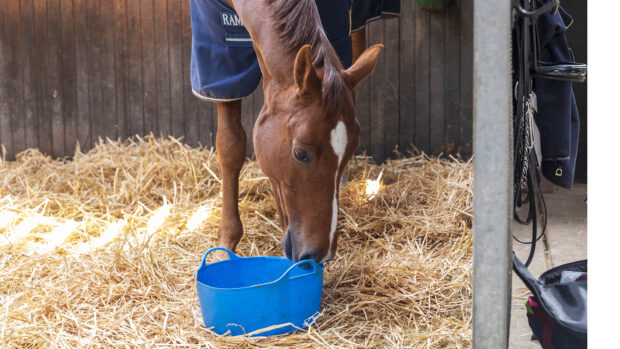SHOWING judges are more likely to be lenient towards overweight than to leaner horses – and are not always able to identify when an animal is carrying excess fat.
US research on judges’ attitudes towards equine weight, which involved sending a questionnaire and pictures of animals of different body condition, found that the proportion of respondents who said they would penalise a horse or pony for being too thin was significantly greater than the proportion who would give a similar penalty to an animal who was too fat.
More than half the respondents, all judges of whom 50% had over 20 years’ experience, agreed or answered “maybe” when asked if they would accept more fat coverage on a pony than on a horse.
The judges were sent 13 photos of horses and ponies, five of which had been classed as obese by experts, three overweight, two average and three thin.
Most of the judges – 77%, 87% and 89% – classed the three overweight horses as average, and 91% classed one of the average horses, who had a “faint outline of ribs visible” as thin.
“These data suggest that judges may be more lenient on overweight horses than lean horses, and are less likely to identify some overweight and obese animals,” stated the study, which was published in the Journal of Equine Veterinary Science.
Author Shannon Pratt Phillips, a professor of equine nutrition at North Carolina State University, told H&H excess weight is a major issue in the US, as it is in the UK.
She said previous research has found that 50 to 60% of US horses are overweight, about half of these obese.
“We thought owners and trainers are keeping these horses overweight for some reason; either they really don’t know the negative consequences of horses being overweight and obese, or they feel worried that if their horses aren’t in the condition judges want, they might be reprimanded,” she said.
“That came from a UK study, and the quote was something like that they felt they wouldn’t do well if the horse wasn’t in that condition.”
Another idea that came from a UK study was that owners felt they may get flack for having horses in leaner condition.
“So education on health is a big part of this, but we wanted to tackle the competition side of it,” Dr Pratt Phillips said. “So of course, we started with the judges. If we want change, we may need more education for judges.”
Dr Pratt Phillips said there is “very little in the rule books that says anything about the condition of the animal” in the US. In some states, horses may not compete if they are below four on a one to nine body condition scale, but there is no upper limit.
“You can imagine someone turning up with a skin and bone horse being told they’re not allowed to compete but you can’t imagine someone told they can’t because their horses are too fat,” she said.
Dr Pratt Phillips would like to see more consistency in what is classed as overweight and obese; she believes greater than six on the one-to-nine scale for the former, and greater than seven for the latter, but not everyone agrees.
“Very easily, people look at a skinny horse and say it’s not healthy but they don’t feel the same when they look at an obese horse, and I wish they would,” she said. “A horse who’s a three, without any other issues, has probably got a better prognosis than one who’s an eight.”
Dr Pratt Phillips also cited a study in which one group of dogs had lifelong ad lib food and another was given 70% of that amount, and on average, those in the second group lived two to three years longer.
She would like to see more education on the dangers of excess equine weight for judges, and work with such professionals, stewards and organisations on rules preventing obese horses from competing, as well as looking at having body condition-scoring experts at shows to assess animals.
Tamzin Furtado, who joined forces with The Horse Trust to give awards to the equid in the healthiest body condition in a number of classes at the Royal International this year told H&H it is “interesting but nor surprising” to see judges say they would penalise overweight and underweight animals.
“Our experience in the UK is similar,” she said. “The judges are, on the surface, aware of the issue of obesity in the show ring, and all of them say they dislike seeing overweight horses, and most have had training on condition scoring – as the results show is the case in the US also.”
Dr Furtado, whose PhD was on equine obesity and owner attitudes to it, said difficulties appear to come when looking at animals in the ring, as judges have to consider so many factors at once.
“When I look at some of the horses, the first thought in my mind is its weight because that’s my job,” she said. “To me, the weight is staring me in the face. But they’re trained through years of judging to look at conformation and all the other things, so weight can sometimes become a bit of a background extra, even though it seems strange to us that it can be overlooked.
“By the same token, I am sure each of us would not notice things that a judge very obviously would see. To them, perhaps a wonky leg or mismatched tack is staring them in the face.”
Dr Furtado found it positive that judges said they would want to penalise overweight horses, as has been the message from UK judges, so the question is how can judges be helped to see weight separately from other factors.
“From an outsider’s perspective, I find it amazing that there is rarely a clear marking system fed back to competitors,” she said. “One judge told me she did mark down overweight horses, but her competitors had no way of knowing that was why they’d been placed down the line unless she made the effort to go and tell them. A scheme that helps demarcate different factors, and includes marks for weight, could really help.
“I think workshops around condition scoring are all very well, but we can already see that they don’t necessarily help when the judge is actually doing their job in the ring. Our experience of standing with judges while they judge has helped both sides understand one another, and increased their awareness of weight because they have someone there, keeping it at the forefront of their minds.
“It is possible this could help longer term, perhaps coupled with new initiatives and mentoring, particularly of judges currently in training.
“But I think more work is needed, and ideally new ideas for tackling this issue should come from within the showing or judging field, since they will be able to design initiatives that are most practical and meaningful to them.”
Lucy Grieve, chairman of the British Equine Veterinary Association ethics and welfare committee, told H&H the research is important as it looks at the perception of equine obesity from those who are not owners, vets or other professionals.
“People like judges have a lot of clout, a lot of responsibility to do the right thing, in terms of welfare and ethics,” she said. “The judge’s decision has a huge impact on how horses are bred and kept, their value, in the short and long term. It’s nice to have some evidence for what we’ve suspected for a long time.
“This would show not just that there’s an issue with identifying obesity in the show ring, it appears there’s a degree of bias away from slimmer horses. We’re not just making obesity acceptable, we’re also implying that having ribs showing isn’t OK; what was a healthy condition was classified [in this study] as unhealthy, which isn’t true.
“We’ve shifted the whole range in the wrong direction. A slim horse doesn’t mean an unhealthy horse, quite the opposite, it’s probably healthy.”
Ms Grieve added that the industry needs to shift its view on what is normal and healthy.
“Those fat pads aren’t just innocuous, it’s not just that the horse is nicely rounded,” she said.
“We’ve got to be very honest; excess fat isn’t just an innocent, unfortunate state, it’s very damaging and harmful. It’s been said fat tissue acts like a poisonous organ, slowly leaking toxins into the body. Every minute it’s there, it’s causing damage. You have to get on top of these problems, not just leave them for another day.
“This study makes us realise how serious obesity is and how easily we dismiss it and get it wrong, even those who have been around horses for decades. We’re all just as vulnerable to being wrong and guilty of either ignoring or misinterpreting obesity and not doing anything about it when it’s staring us in the face.
“We’ve all got to take on the responsibility of doing something. This could be as serious as ignoring a tumour, and you wouldn’t do that.”
You might also be interested in:

Major show gives signs of hope in battle against equine obesity

Not just laminitis: vets warn of performance-related issues caused by excess equine weight

Ban for owner of ‘grossly obese’ horse found more than 100kg overweight

Subscribe to Horse & Hound magazine today – and enjoy unlimited website access all year round
Horse & Hound magazine, out every Thursday, is packed with all the latest news and reports, as well as interviews, specials, nostalgia, vet and training advice. Find how you can enjoy the magazine delivered to your door every week, plus options to upgrade your subscription to access our online service that brings you breaking news and reports as well as other benefits.




